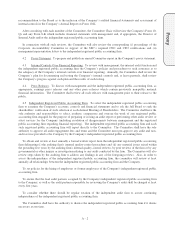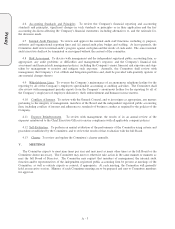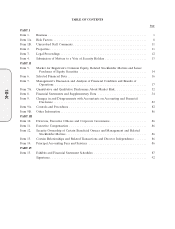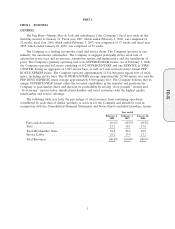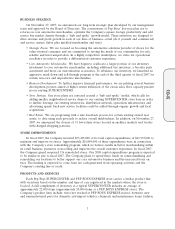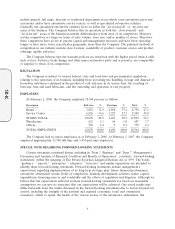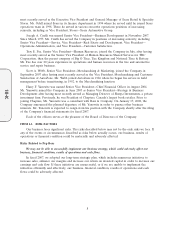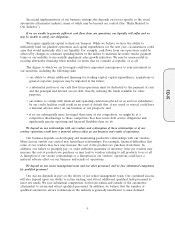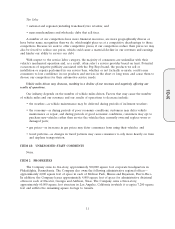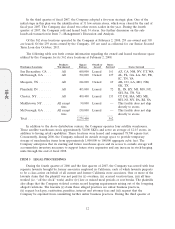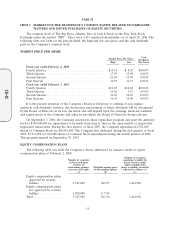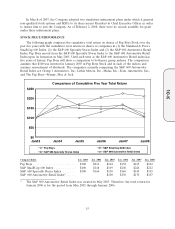Pep Boys 2007 Annual Report Download - page 51
Download and view the complete annual report
Please find page 51 of the 2007 Pep Boys annual report below. You can navigate through the pages in the report by either clicking on the pages listed below, or by using the keyword search tool below to find specific information within the annual report.
In fiscal 2007, approximately 37% of the Company’s total revenues were cash transactions with the
remainder being co-branded credit card, other credit and debit card transactions and commercial credit
accounts.
The Company does not experience significant seasonal fluctuation in the generation of its
revenues.
STORE OPERATIONS AND MANAGEMENT
All Pep Boys stores are open seven days a week. Each SUPERCENTER has a Retail Manager and
Service Manager (PEP BOYS EXPRESS STORES only have a Retail Manager) who report up through
a distinct organization of Area Directors and Divisional Vice Presidents specializing in operating their
respective businesses. The Divisional Vice Presidents report to the Interim Chief Executive Officer. The
Interim Chief Executive Officer serves as the Company’s principal operations officer. A Retail
Manager’s and a Service Manager’s average length of service with the Company is approximately 8.4
and 5.7 years, respectively.
Supervision and control over individual stores is facilitated by means of the Company’s computer
system, operational handbooks and regular visits to stores by Area Directors and Divisional Vice
Presidents. All of the Company’s advertising, accounting, purchasing, management information systems,
and most of its administrative functions are conducted at its corporate headquarters in Philadelphia,
Pennsylvania. Certain administrative functions for the Company’s divisional operations are performed at
various regional offices of the Company. See, ‘‘Item 2. Properties.’’
INVENTORY CONTROL AND DISTRIBUTION
Most of the Company’s merchandise is distributed to its stores from its warehouses primarily by
dedicated and contract carriers. Target levels of inventory for each product are established for each of
the Company’s warehouses and stores and are based upon prior shipment history, sales trends and
seasonal demand. Inventory on hand is compared to the target levels on a weekly basis at each
warehouse, potentially triggering re-ordering merchandise from its suppliers.
Each Pep Boys store has an automatic inventory replenishment system that automatically orders
additional inventory, generally from a warehouse, when a store’s inventory on hand falls below the
target levels. In addition, the Company’s centralized buying system, coupled with continued
advancement in its warehouse and distribution systems, has enhanced the Company’s ability to control
its inventory.
SUPPLIERS
During fiscal 2007, the Company’s ten largest suppliers accounted for approximately 43% of the
merchandise purchased by the Company. No single supplier accounted for more than 19% of the
Company’s purchases. The Company has no long-term contracts under which the Company is required
to purchase merchandise except for a contract to purchase bulk oil for use in the Company’s service
bays, which expires in 2011. Management believes that the relationships the Company has established
with its suppliers are generally good.
In the past, the Company has not experienced difficulty in obtaining satisfactory sources of supply
and believes that adequate alternative sources of supply exist, at substantially similar cost, for the types
of merchandise sold in its stores.
COMPETITION
The business of the Company is highly competitive. The Company encounters competition from
nationwide and regional chains and from local independent merchants. The Company’s competitors
5
10-K


